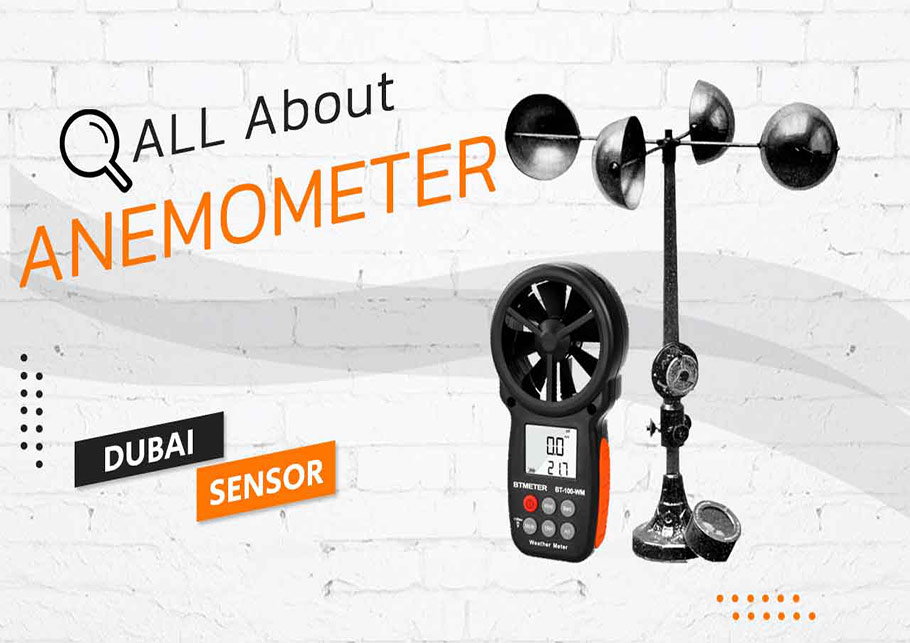Comparing Digital and Mechanical Anemometers: Which is Right for You?
Comparing Digital and Mechanical Anemometers: Which is Right for You?
Blog Article
Anemometers Unveiled: Recognizing Their Significance in Ecological Surveillance and Precaution
The function of anemometers in environmental surveillance and safety and security actions is often taken too lightly, yet their significance is undeniable. From meteorology to aeronautics security, anemometers play an essential role in offering precise data that notifies decision-making processes and improves total safety.
Background of Anemometers
The development of anemometers can be traced back to the old worlds where primary wind gauging devices were very first made use of. These very early wind measurement tools laid the foundation for the advancement of much more sophisticated anemometers over time. One of the earliest known anemometers was the hemispherical mug anemometer invented by Leon Battista Alberti in the 15th century. This design included 4 hemispherical mugs that accumulated wind energy, providing a measurement of its intensity based on the speed of turning.
Over the years, developments in modern technology led to the growth of even more modern anemometers, including ultrasonic anemometers and laser Doppler anemometers, using raised precision and effectiveness in determining wind rate and direction. The history of anemometers showcases an impressive trip of innovation and development in the field of meteorology.
Kinds of Anemometers
Throughout the area of meteorology, numerous types of anemometers have been created to precisely measure wind rate and direction. The most common kind is the mug anemometer, which contains three or 4 cups placed on horizontal arms that rotate with the wind. As the cups rotate, the speed at which they revolve is directly symmetrical to the wind rate. Another extensively used type is the vane anemometer, which includes a tail or fin that aligns itself with the wind instructions. This placement enables the device to figure out the wind instructions. Sonic anemometers use ultrasonic signals to determine wind speed and direction properly. They are commonly used in research applications due to their high accuracy. Hot-wire anemometers operate based on the principle that the cooling impact of wind on a warmed cable is symmetrical to the wind rate. These anemometers appropriate for gauging low wind speeds with high precision. Each type of anemometer has its staminas and is selected based upon the details requirements of the surveillance job at hand.
Applications in Meteorology
Having discussed the numerous kinds of anemometers utilized in weather forecasting for measuring wind speed and direction, it is vital to explore their sensible applications in the field. Anemometers play a critical role in weather forecasting by providing real-time and accurate data on wind problems (anemometer). Meteorologists use anemometers to keep an eye on wind speed and instructions to anticipate climate patterns, issue cautions for severe weather condition occasions like hurricanes, storms, and typhoons, and evaluate weather find more info for aeronautics safety
In weather forecasting, anemometers aid in recognizing neighborhood and regional wind patterns, which are essential for forecasting weather changes and identifying weather trends. These tools are likewise made use of in research study to research microclimates, metropolitan warm islands, and air contamination dispersion. Furthermore, anemometers are employed in farming to optimize plant administration techniques, such as watering and chemical application, based on wind problems.
Relevance in Aeronautics Safety And Security
An indispensable element of making certain air travel security depends on the careful surveillance of wind conditions using anemometers. Anemometers play a vital role in air travel by offering real-time data on wind rate and instructions, aiding pilots in making informed decisions throughout landing, liftoff, and flight. Strong and unforeseeable winds can significantly affect aircraft operations, making it important for aeronautics authorities to count on accurate wind dimensions to make certain the security of passengers and team.

In the dynamic atmosphere of aviation, where also small adjustments in wind speed and instructions can have extensive results, anemometers stand as crucial devices for promoting protected and secure flight.
Duty in Environmental Research Study
Anemometers play a critical duty in ecological research study by providing essential information on wind rate and instructions. By properly gauging wind attributes, anemometers help researchers analyze the motion of toxins in the air, assess the impact of commercial discharges, and forecast the spread of pollutants in the atmosphere.


Final Thought
In conclusion, anemometers have played a vital function in environmental monitoring and safety measures. Comprehending the significance of anemometers is crucial for properly gauging wind rate and instructions, which is important for forecasting climate patterns, making certain risk-free air travel procedures, and conducting environmental researches.
One of the earliest known anemometers was the hemispherical cup anemometer created by Leon Battista Alberti in the 15th century. Over the years, improvements in modern technology led to the advancement of more modern anemometers, consisting of ultrasonic anemometers and laser Doppler anemometers, supplying raised accuracy and effectiveness in measuring wind rate and instructions. Hot-wire anemometers run based on the principle that the cooling effect of wind on a heated wire is proportional to the wind speed. Meteorologists use anemometers to check wind speed and direction to forecast climate patterns, issue warnings for serious weather events like hurricanes, storms, and hurricanes, and examine atmospheric conditions for aeronautics safety and security.
Understanding the value of anemometers is crucial for accurately determining wind rate and instructions, which is vital for predicting weather patterns, making certain risk-free air travel procedures, you can try this out and performing environmental research studies. (anemometer)
Report this page